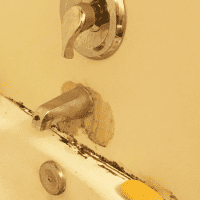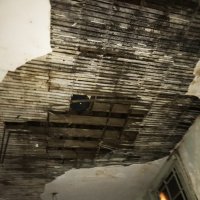- Mold Toxicity, Biotoxin Illness & CIRS
- What Does Black Mold Smell Like?
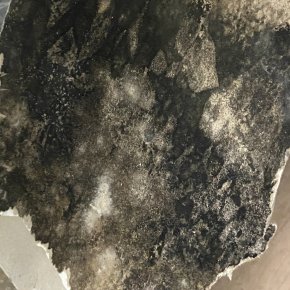
What Does Black Mold Smell Like?
Articles
- Allergies
- Asthma
- CIRS - Chronic Inflammatory Response Syndrome
- Headaches
- Memory Loss
- Mycotoxin
- Sick Building Syndrome
What Does Black Mold Smell Like?
Black mold, also known as Stachybotrys chartarum, is a type of toxic mold that can grow in homes and buildings with excess moisture. But what does black mold actually smell like? Here’s what you should know to help with identifying black mold by its distinct musty smell.
What Does Toxic Mold Smell Like?
Mold can cause a nasty, musty smell in your home. The smells may vary slightly depending on the mold species present, but there are some common scents to be aware of:
- Rotting wood odor
- Earthy, musty smell
- Sour, tangy scent
- Smell of fermenting alcohol
These unpleasant odors are caused by microbial volatile organic compounds (mVOCs) released by mold spores and growth. The musty, stale smell of mold is one of the first signs that mold may be present. Trust your nose – if it smells moldy in your home, there’s a good chance mold is growing. Smell can be one of many warning signs of mold.
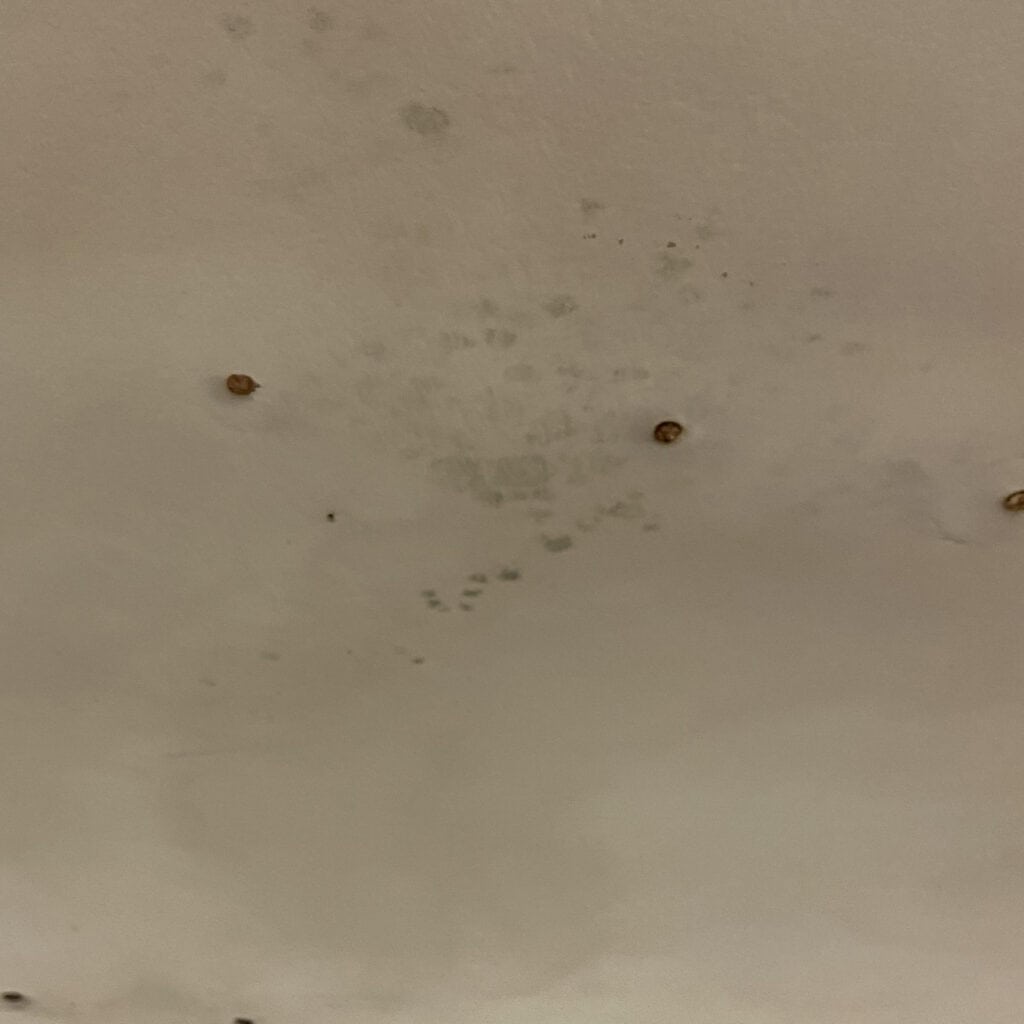
Black Mold Smell is a Sign of Danger Waiting to Happen
Black mold, in particular, has a very distinctive musty odor. The smell of Stachybotrys chartarum is stronger and more unpleasant than other molds. It produces a pungent, foul odor that smells like rotting hay or straw. Some describe the mold smell like “sweaty socks” or “wet laundry” smell.
Unlike other common household molds, black mold can produce mycotoxins that are very dangerous to inhale. Identifying a smell that could indicate toxic black mold can potentially save future health effects. The musty smelling mold and, rotten stench may indicate a black mold infestation that needs professional remediation.
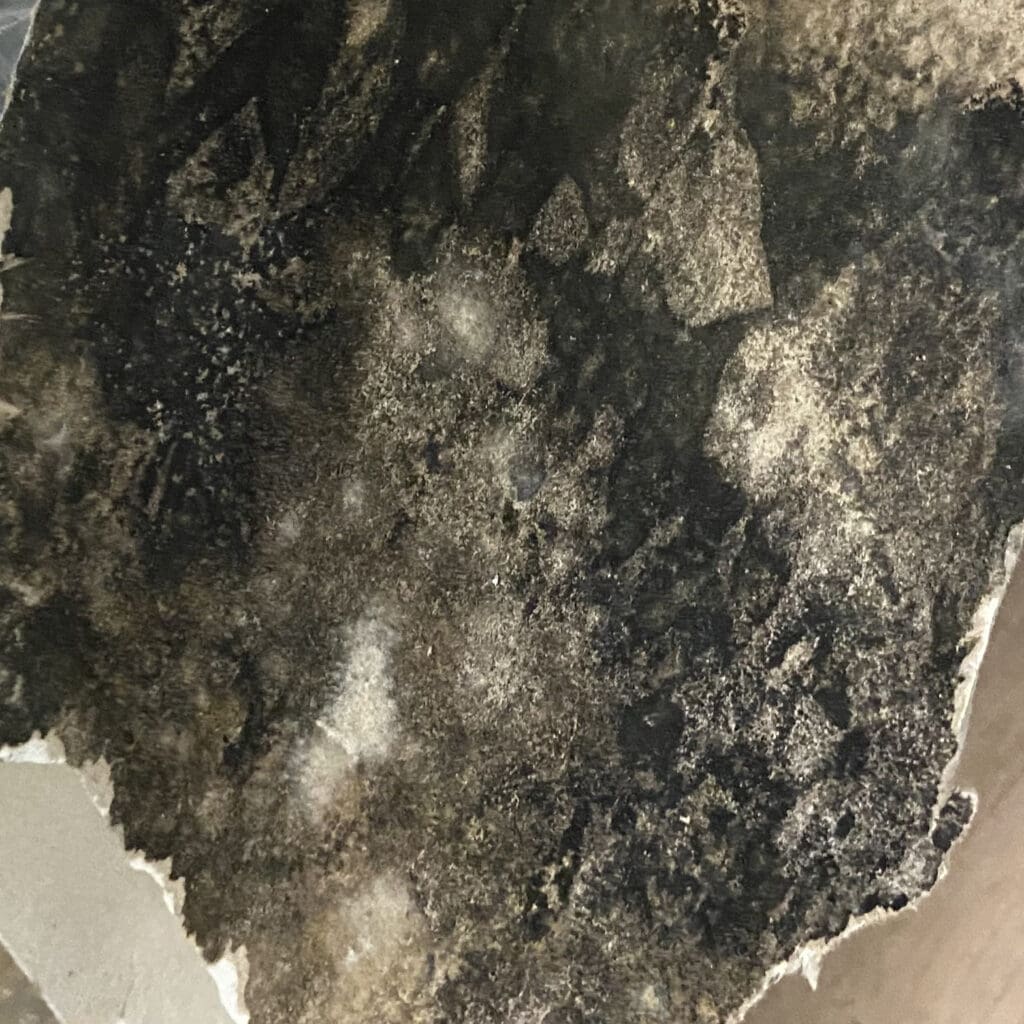
Why is Black Mold So Dangerous?
Black mold is toxic to humans and can cause very severe reactions. Toxins from Stachybotrys chartarum can suppress immune systems and induce chronic lung disease. Allergic reactions to black mold range from runny nose and sore throat to skin rash, sinus congestion, and asthma attacks.
Prolonged exposure can be much worse, potentially leading to memory loss, headaches, nausea and vomiting as well as many other symptoms of CIRS. Babies, children, elderly people and those with compromised immune systems are most at risk from black mold as well as people who are at a higher risk genetically.
The smell of mold can resemble the smell that rotten wood or rotting leaves produces, or it can smell sour and tangy like fermenting alcohol. Other descriptions of black mold odor include:
- Wet socks or sweaty shoes
- Rotting meat or fish
- Decaying leaves
- Musty basement
Growth Spots of Varying Colors
In addition to the foul stench, black mold can appear as black, gray, brown, or greenish splotches. The discoloration is from mold spore growth, which thrive in damp areas. Look for black mold smells originating from:
- Behind drywall, wallpaper or paneling
- Under carpets and flooring
- In attics, basements and crawl spaces
- Near plumbing fixtures and pipes
- On wood framing and other building materials
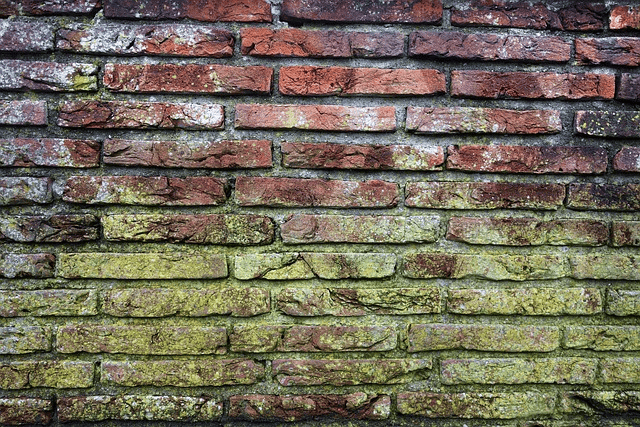
Mold Can Smell Musty When Just Starting to Form
The musty mold smell can be very pungent, and the smell is generally consistent. But you may notice a milder musty or earthy smell when mold is just beginning to grow. Don’t ignore a slight musty smell or mold growing anywhere in your home. Take action quickly before mold has a chance to spread and release more toxic spores and mycotoxins into the air you breathe.
How Can You Tell if You Have Black Mold in Your Home?
Visible mold growth and a strong musty stench are two signs black mold may be lurking in your home. Here are some other clues that indicate a black mold problem:
- Unexplained health symptoms like chronic coughing, headaches or fatigue to name a few
- Water damage, moisture issues or high indoor humidity
- Condensation build-up on windows and surfaces
- Dark stains on walls, baseboards, woodwork, drywall or paneling
- Bubbling or peeling paint and wallpaper
Don’t try to identify black mold yourself or scrape at suspicious spots. Disturbing the mold can release spores and mycotoxins. Have a professional mold inspection and testing done first. They can take samples, send them to a lab for analysis, and confirm whether toxic black mold is present.
How to Get Rid of Black Mold
Black mold is very difficult to remove yourself. Never scrub or bleach black mold, as this can worsen the problem. The spores and toxins require specialized cleaning solutions, containment techniques and equipment to remove properly.
Professional black mold remediation involves:
- HEPA vacuuming spores and mold growth
- Removing contaminated building materials
- Anti-microbial or biocide treatment
- Dehumidifying and drying affected areas
- Cleaning HVAC systems
- Preventative actions against moisture and leaks

Completely getting rid of black mold requires addressing what’s causing the excess moisture allowing it to grow in the first place.
What Should I Do if I Smell Mold in My Home?
If you notice a persistent musty, earthy smell or other signs of mold, take action right away:
- Increase ventilation to help with air quality
- Look for visible signs of mold and the source of the odor
- Check for dampness or moisture issues
- Buy a mold test kit to sample the air
- Call an HVAC company to inspect your ductwork
- Contact a mold remediation specialist for an inspection
- Seek medical attention if you experience severe reactions or health issues
Catching a mold problem early is key before major serious mold infestations can take hold and create bigger issues. Don’t ignore mold odors or musty smells lingering in your home.
How to Get Rid of Mold Smells in Your Home
Along with mold removal, you’ll also want to eliminate the foul moldy odors filling your home. Try these tips for getting rid of moldy odor and smells:
- Increase ventilation and air circulation
- Run dehumidifiers to reduce moisture
- Use HEPA air filters and purifiers to remove mold spores
- Adding charcoal filters will help with removing the mold smell
- The most important thing you can do is limit exposure and have the mold professionally removed
Mold needs a damp surface or higher than normal humidity to grow (60%+). Removing the mold and fixing dampness or humidity issues are the most critical steps. However, proper remediation should be done by a professional who has the right protective equipment. Toxic black mold is no joke and can cause very unpleasant odor with serious health consequences. Combining mold remediation and odor elimination methods will help freshen the air and restore a clean smelling home environment.
Don’t ignore strange musty odors or live with lingering mold smells in your house. A strong, earthy, stale moldy smell that may signal black mold growth releasing dangerous mycotoxins that could make you or your family sick. Toxic black mold is often the result of water damage in buildings or homes. Water damage can lead to sick building syndrome and for those who are sensitive to mold, can lead to CIRS. Take prompt action by having professional mold tests done in your home. Addressing a black mold problem at the strange musty odor can help prevent serious health issues in the future.
-
{{#owner}}
-
{{#url}}
{{#avatarSrc}}
{{name}} {{/url}} {{^url}} {{#avatar}} {{& avatar}} {{/avatar}} {{name}} {{/url}} - {{/owner}} {{#created}}
- {{created}} {{/created}}





